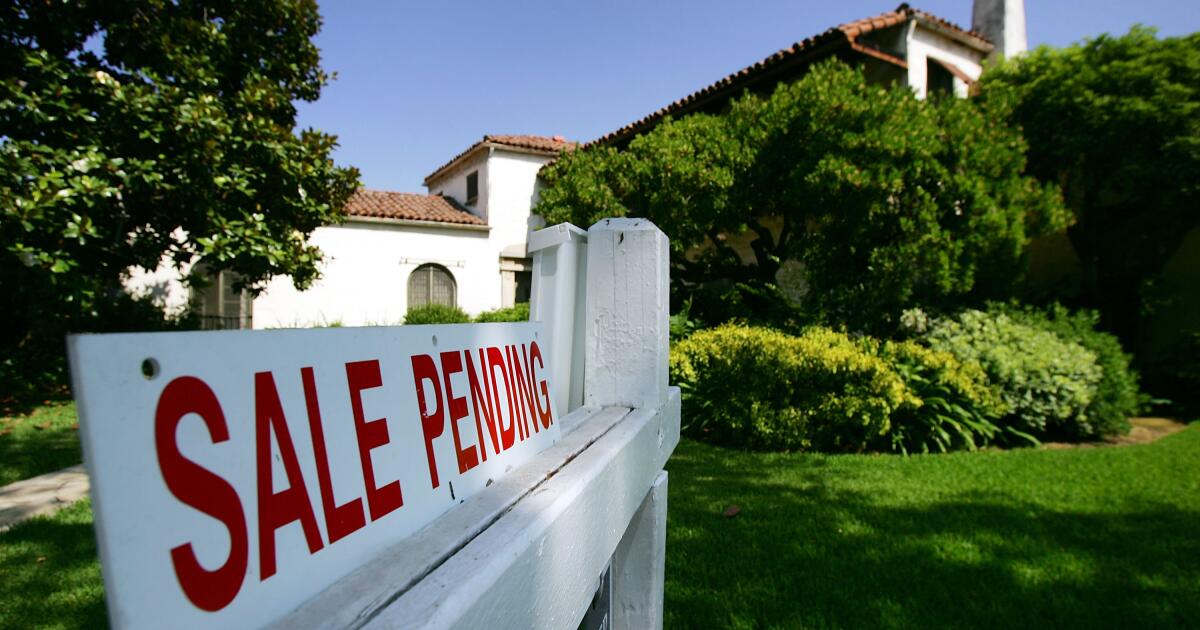In 2022, Los Angeles voters accepted Measure ULA, a switch tax on the sale of high-value properties inside the town limits. Nicknamed the mansion tax by its supporters, Measure ULA imposed a 4% tax on gross sales over $5 million and a 5.5% tax on gross sales over $10 million — one of many steepest such levies within the nation. Its income is earmarked for low-income housing packages.
ULA’s tax is paid by sellers, which can clarify why Mayor Karen Bass steered suspending it after the wildfires. The mayor is correct to fret. Property values in Pacific Palisades usually high $5 million, creating concern that the tax may penalize homeowners who misplaced the whole lot and simply wish to promote and transfer on. However Measure ULA’s issues run deeper. Suspended or not, it must be reformed.
Regardless of its nickname, ULA isn’t only a tax on mansions. It applies to just about each property priced over $5 million, together with condominium buildings, places of work, soundstages, inns and purchasing facilities — locations Angelenos reside, work and store.
Moreover, ULA shouldn’t be a tax on revenue. It’s based mostly on sale value. Thus, the proprietor of an workplace constructing that has plunged 90% in worth because the COVID-19 pandemic would possibly promote it for $15 million and incur an $825,000 ULA tax, regardless of the proprietor’s total loss. Alternatively, somebody who purchased a home 10 years in the past for $500,000 and sells as we speak for $1.5 million would pay nothing. ULA’s design means massive losses could also be closely taxed whereas large features go scot free.
Measure ULA additionally has steep “cliffs” — thresholds the place small value will increase set off large tax will increase. A property promoting for $5 million incurs no ULA tax, however one promoting for a greenback extra pays $200,000. Such cliffs create robust incentives for homeowners to keep away from the tax.
The simplest technique to keep away from the tax is to not promote, and our analysis reveals that over the primary two years since ULA was applied, high-value property gross sales within the metropolis fell by about 50% — a far steeper decline than elsewhere within the county throughout the identical interval. Greater rates of interest and development prices aren’t in charge for the decline — these circumstances affected your entire area. And whereas there was a brief “rush to promote” earlier than ULA was applied, our evaluation accounts for that conduct. The 50% drop is an impact of ULA particularly.
Depressed gross sales imply much less income generated by ULA. Backers estimated ULA would increase $600 million to $1.1 billion yearly. To date, collections have averaged simply $288 million per yr — lower than half the bottom projections.
By lowering massive gross sales, furthermore, ULA has slowed the manufacturing of market-rate flats. Most multifamily developments contain shopping for an acceptable website after which promoting the completed constructing. ULA can add considerably to the price of each of these transactions. And since most market-rate housing developments now embrace some income-restricted inexpensive flats supplied by builders in trade for elevated undertaking dimension, Los Angeles is getting fewer of these, too. Conservatively, we estimate ULA is costing the town greater than 1,900 new items a yr, of which not less than 160 would have been inexpensive items produced with out public funding. In the meantime, the ULA income collected from newer multifamily initiatives because the tax went into impact is simply sufficient to subsidize, at finest, half that quantity. ULA’s poor design needlessly prices the town inexpensive housing.
The influence doesn’t cease at housing. ULA has additionally slowed massive transactions for business, industrial and workplace properties. This impact, mixed with the slowdown in residential transactions, is impeding property tax development. Beneath California’s property tax system, native revenues enhance primarily when properties are reassessed at sale. Giant transactions contribute disproportionately to that development. Gross sales over $5 million are solely 4% of all transactions however account for greater than 40% of the expansion within the metropolis’s tax base. Over time, fewer large transactions means much less funding for all public businesses and packages that depend on L.A.’s tax base: faculties, neighborhood faculties and the county and its safety-net packages.
Though the poll language for Measure ULA included robust limits on the Metropolis Council’s energy to amend it, ULA is fixable. The simplest method could also be state motion. State governments virtually at all times have the facility to revoke or amend native actions, and switch taxes are arguably a difficulty of curiosity to the state, as a result of they’ve direct results on California’s housing objectives and total fiscal well being.
Focused state laws may cut back ULA’s unfavorable results whereas preserving its purpose of elevating funds to assist low-income renters. Choices embrace proscribing the tax to single-family houses (making it a real mansion fax), adopting marginal charges to remove the “cliffs” (to work equally to earnings taxes ), or limiting ULA to properties that haven’t been bought or improved in a few years; gross sales of those properties are more likely to symbolize a big windfall for sellers and such gross sales wouldn’t are inclined to undermine housing and job creation.
Los Angeles wants housing and financial insurance policies that work — particularly as we get well from the January wildfires. Meaning balancing the pressing want for brand spanking new income with insurance policies that encourage new housing and jobs. Measure ULA, as at present structured, makes that stability tougher to realize. It may turn out to be a greater device — one which fulfills voters’ hopes for extra inexpensive housing, strengthens the native economic system and protects the social and monetary basis of the area.
Michael Manville is a professor of city planning at UCLA and an affiliated scholar at its Lewis Middle for Regional Coverage Research. Shane Philips is housing initiative undertaking supervisor on the Lewis Middle. Jason Ward is co-director of the Rand Middle on Housing and Homelessness.
